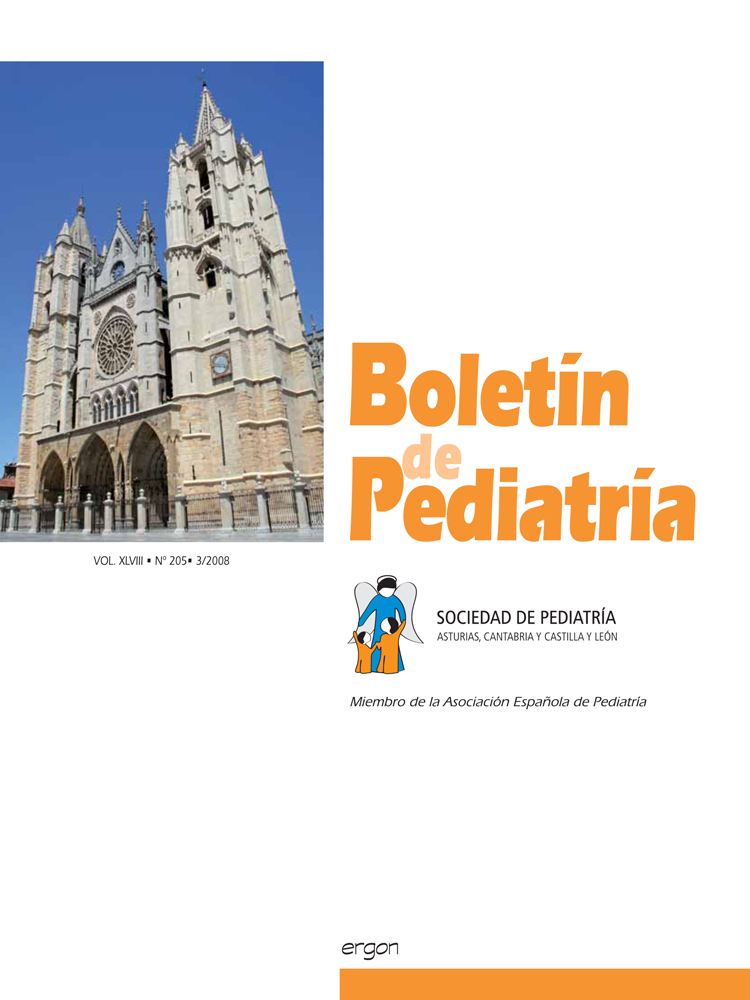Abstract
Objectives: Describing the clinic presentation, analytic parameters, epidemiology and therapeutical management of infants younger than three months, admitted at the Hospital Universitario Central de Asturias, with the diagnosis of bronchiolitis during the first semester of 2006.
Material and methods: An epidemiological retrospective study, was performed in the paediatrics department of the Hospital Universitario Central de Asturias. Clinical records, from January, 1 to June, 30 of infants younger than 3 months of age hospitalised with diagnosis of bronchiolitis were reviewed, describing clinical, analytic, epidemiologic and therapeutical parameters.
Results: In this period 15500 pediatric emergencies were attended, being 415 of them bronchiolitis (2.6%), admitting to the hospital 129 (31%). 54 of them were less than 3 months of age (42%), over a total amount of 88 infants who were attended less than that age (rate of admission: 61%; mean age was 47 days). 64.8% were males. Median length of admission was 6 days, and Wood-Downes-Ferrés´s score median was 4. Respiratory syncytial virus (RSV) was isolated in 50% nasal culture, and metapneumovirus in 7.4%. Chest x-ray was performed in 70.4%, being pathological in 24.1%. In 20.4% first grade relatives smoked, and 35% had personal records of atopy in first grade relatives. Eighty five percent were admitted to the hospitalization floor; and 14.6% were admitted at the intensive care unit. Focusing on medical therapy, 83.3% of them received nebulized epinephrine, while 38.9% received nebulized salbutamol. Nearly fifteen percent were admitted to the hospital in the next three months because of a respiratory process.
Commentaries: Bronchiolitis is a potentially severe disease, in relation with the child´s age. Because of its severity, especially in this group of age, an important percentage requires admission to an intensive care unit. Therapeutical management is still controversial, as it does not exist a therapeutical indication with an A or B grade of evidence. In our cohort nebulized epinephrine was the most used therapy in the youngest infants.

This work is licensed under a Creative Commons Attribution-NonCommercial 4.0 International License.
Copyright (c) 2008 Boletín de Pediatría
